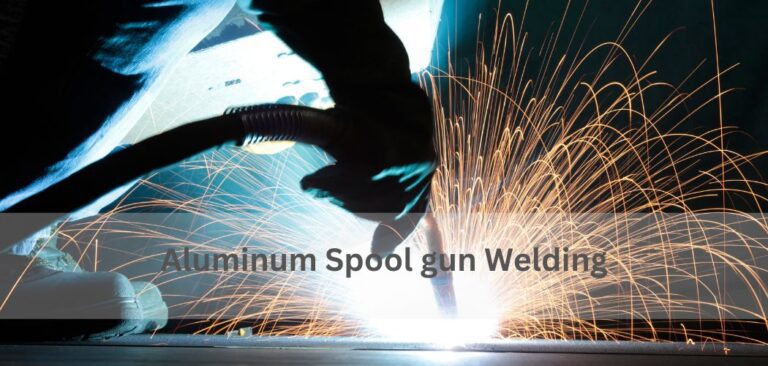How to Put Shocks on a Truck
To put shocks on a truck, first, lift the truck, then remove old shocks and install new shocks. Properly securing the shocks is vital for safety and performance.
When upgrading or replacing shocks, always follow manufacturer guidelines and use appropriate tools and equipment. Shocks play a crucial role in ensuring a smooth and stable ride for your truck, absorbing bumps and vibrations from the road. By maintaining and replacing shocks as needed, you can improve your truck’s handling, comfort, and overall driving experience.
Regularly inspecting and servicing your truck’s shocks can also help prevent premature wear and tear on other suspension components.

Credit: www.wikihow.com
Choosing The Right Shocks
When it comes to upgrading your truck’s performance and handling, choosing the right shocks is crucial. Shocks play a vital role in ensuring a smooth and controlled ride, absorbing the impact of bumps and uneven terrain. By considering your truck’s specifications and identifying your driving needs, you can select the perfect shocks to enhance your driving experience.
Consider The Truck’s Specifications
Before selecting shocks for your truck, it’s essential to consider the manufacturer’s recommended specifications. Check the owner’s manual or consult with a mechanic to determine the appropriate size and type of shocks for your specific truck model. Factors to consider include the truck’s weight, wheelbase, and suspension design.
Identify Your Driving Needs
Assessing your driving needs is crucial in choosing the right shocks. If you frequently haul heavy loads or tow trailers, you’ll want shocks that can handle the added weight and provide stability. On the other hand, if you use your truck for off-roading or encounter rough terrain, shocks with greater dampening capabilities may be necessary to ensure a smooth ride.

Credit: www.youtube.com
Gathering The Necessary Tools
Learn how to put shocks on your truck by gathering all the necessary tools. Prepare yourself with the right equipment to ensure a smooth installation process.
Basic Tools
- Socket wrench set
- Jack stands
- Lug wrench
- Flathead screwdriver
Specialized Tools
- Strut spring compressor
- Coil spring compressor
- Shock absorber socket
- Torque wrench
When putting shocks on a truck, having the right tools is crucial. Basic tools, like a socket wrench set and jack stands, are essential. Specialized tools, such as a strut spring compressor and shock absorber socket, are also required. Ensure you have all the necessary tools before starting the installation process.
Removing The Old Shocks
Removing the old shocks is an essential step in the process of replacing or upgrading the shocks on your truck. This is crucial to ensure optimal performance and safety while driving. Below are the steps involved in removing the old shocks from your truck.
Lifting The Truck
Before starting the removal process, use a jack to lift your truck off the ground to give you better access to the shocks.
Locating And Removing The Mounting Bolts
- Locate the mounting bolts that secure the shocks to the suspension system.
- Use a wrench to loosen and remove the mounting bolts.
- Gently pull out the old shocks from the suspension system once the bolts are removed.
Installing The New Shocks
To install new shocks on a truck, start by raising the vehicle and removing the old shocks. Then, replace them with the new ones, securing them tightly. Finally, lower the truck and ensure the shocks are properly aligned for a smooth driving experience.
“` Installing the new shocks on your truck is an important step in ensuring a smooth and comfortable ride. Proper installation is crucial to the performance and longevity of your shocks. Let’s walk through the process step by step. “`htmlAttaching The New Shocks To The Mounting Bolts
“` To begin the installation, carefully attach the new shocks to the mounting bolts on the vehicle’s frame. Be sure to align the upper part of the shock with the mounting bracket and secure it in place using the appropriate hardware. Tighten the bolts to the manufacturer’s recommended torque specifications to ensure a secure fit. This step is critical for the proper functioning of the shocks and the safety of your vehicle. “`htmlLowering The Truck
“` After attaching the shocks, lower the truck to a level surface. This allows the shocks to settle into their normal position and ensures proper alignment and ride height. Once the truck is lowered, check the shocks for any signs of binding or interference. Verify that the shocks are positioned correctly and that they have adequate clearance to move freely as the suspension articulates. By following these steps, you can successfully install new shocks on your truck, promoting a smoother and more controlled ride. Remember to consult your vehicle’s service manual for specific instructions related to your truck’s make and model and consider seeking professional assistance if you are unsure about any aspect of the installation process.Testing And Adjusting
Once you have successfully installed shocks on your truck, it is crucial to test and adjust them properly to ensure optimal performance. This step is essential for both safety reasons and to maximize the benefits of your new shocks.
Checking For Proper Installation
Before testing your shocks, it is essential to confirm that they have been installed correctly. A thorough inspection will ensure that the shocks are securely mounted and that all connections are properly tightened. From visual checks to physical examinations, take the time to ensure that nothing is loose or out of place.
Pay specific attention to:
- The shock absorber’s position and alignment.
- The condition of all mounting bolts and bushings.
- The tightness of all connections.
If you notice any issues during the inspection, address them immediately to prevent further problems.
Optimizing The Shocks
Once you have confirmed the correct installation of the shocks, it’s time to optimize their performance. This step involves fine-tuning the shocks to match your specific driving conditions and preferences.
Here are some factors to consider when optimizing your shocks:
- Types of road surfaces: Depending on whether you frequently drive on paved roads, off-road terrains, or a combination of both, you may need to adjust the shocks to handle different conditions.
- Driving style: If you enjoy spirited driving or towing heavy loads, you may need to adjust the shocks to provide a stiffer or more responsive ride. On the other hand, if you prefer a smoother and more comfortable ride, you might want to adjust the shocks to be more cushioning.
- Load capacity: Take into account the weight you usually carry in your truck or any additional accessories you have installed. Adjust the shocks accordingly to ensure they can handle the load without compromising performance.
- Personal preference: Ultimately, how your truck feels on the road comes down to personal preference. Experiment with different settings to find the perfect balance between comfort and handling that suits your needs.
Remember to test your truck with each adjustment you make and take note of any changes in ride quality or performance. It may take several iterations to find the optimal settings for your specific driving needs.
By properly testing and adjusting your shocks, you can ensure a safer and more comfortable driving experience. Don’t overlook this crucial step to get the most out of your newly installed shocks.

Credit: www.wikihow.com
Frequently Asked Questions On How To Put Shocks On A Truck
How Hard Is It To Replace Shocks On A Truck?
Replacing shocks on a truck is not overly difficult, often requiring basic tools and mechanical knowledge.
Does It Matter Which Way You Put Shocks On A Truck?
The direction of shocks on a truck matters because it affects performance, comfort, and safety. Correct installation ensures optimal function.
Do You Have To Jack Up A Truck To Change Shocks?
Yes, you need to jack up a truck to change the shocks for easier access and safety.
How Much Does It Cost To Put A Shock On A Truck?
The cost of putting a shock on a truck varies. It can range from $100 to $500, depending on the quality and brand of the shock, as well as the labor fees at the chosen mechanic or auto shop.
How Do You Install Shocks On A Truck?
To install shocks on a truck, first, lift the vehicle, then remove the old shocks. Install the new shocks and tighten the bolts securely.
What Is The Purpose Of Shocks In A Truck?
Shocks in a truck are designed to absorb impacts and vibrations, providing a smoother and more comfortable ride.
Can I Install Shocks On My Truck By Myself?
Yes, installing shocks on a truck can be done by yourself if you have the necessary tools and follow proper instructions.
Conclusion
Properly installing shocks on a truck is crucial for maintaining its performance and safety. Following the step-by-step guide and using the right tools will ensure a smooth and efficient installation process. By staying informed and taking the necessary precautions, you can enjoy a smooth, comfortable ride in your truck for the long haul.



